Economic Development (Part 2): July 2025 Current Affairs | Current Affairs & General Knowledge - CLAT PDF Download
Population Decline and an Ill-Informed Chorus
Why in News?
The public discourse surrounding population dynamics has shifted from fears of unchecked growth and its environmental impacts to growing concerns over declining fertility rates. This evolution reflects changing demographic priorities and societal anxieties about future population trends.
Key Takeaways
- Contradictory views exist regarding population trends, with some experts warning of imminent declines.
- Global data suggests a future population peak before eventual decline, challenging alarmist narratives.
- Barriers to desired family size are significant, affecting individuals' reproductive choices globally.
Additional Details
- Projections vs. Predictions: Population projections depend heavily on assumptions about future birth and death rates, leading to greater uncertainty further into the future.
- Population Momentum: Populations can continue to grow for decades even when fertility rates fall below replacement levels due to a large proportion of the population remaining in reproductive age.
- Fertility Challenges: According to a UNFPA 2025 report, 1 in 5 individuals surveyed across 14 countries felt unable to achieve their preferred number of children.
- Key barriers identified include financial limitations (38% in India, 58% in South Korea), housing constraints (22% in India, 31% in South Korea), and lack of quality childcare (18%).
Despite significant financial investments in fertility-boosting measures, as seen in South Korea, where over $200 billion was spent with minimal impact, the focus should shift from coercive policies to those that promote family choice and support. It is essential to remove penalties for working mothers and to foster inclusive societal structures that aid families rather than curtail reproductive rights.
Bridge too far: A regular audit of all major infrastructure projects is a must
 Why in News?
Why in News?
Recently, a 40-year-old bridge in Vadodara, Gujarat collapsed on July 9, resulting in multiple vehicles falling into the Mahisagar River and causing the death of 18 individuals.
Key Takeaways
- Infrastructure failures in India are recurring due to various systemic issues.
- The lack of regular audits and maintenance exacerbates the risks associated with ageing structures.
Causes of Infrastructure Failures
- Ageing and outdated infrastructure: Many structures, such as the Morbi suspension bridge (2022) in Gujarat, exceeded their intended lifespan without adequate upgrades.
- Overuse and overload: Bridges and roads designed for lower traffic volumes are now subjected to high urban and industrial loads, leading to incidents like the Indrayani pedestrian bridge collapse in Pune (2024).
- Neglect and poor maintenance: The lack of routine inspections contributed to the Vadodara bridge collapse (2024), despite locals raising concerns that went ignored.
- Institutional inefficiency: Municipal bodies are often understaffed and underfunded, unable to meet growing infrastructure needs, especially in peri-urban areas.
- Lack of accountability: Failure analysis reports, such as for the Mizoram railway bridge girder collapse (2023), are rarely published, limiting systemic learning and corrective actions.
Understanding Peri-urban Infrastructure
- Definition: Peri-urban infrastructure refers to basic facilities and services (like roads, bridges, water supply, drainage, electricity, etc.) found in transitional zones between urban and rural areas.
- Prone to collapse: Peri-urban areas often develop without proper zoning laws or building codes, leading to substandard construction.
Challenges in Peri-urban Areas
- Unregulated urban expansion: Many flyovers and water systems are constructed around unplanned colonies, lacking load assessments.
- Jurisdictional ambiguity: These regions fall between urban and rural governance structures, causing confusion over responsibilities.
- Low visibility: Peri-urban areas lack media attention and political prioritization, resulting in deferred maintenance and unchecked infrastructure decay.
Improving Asset Upkeep through AMRUT and UIDF
- Focused maintenance: AMRUT 2.0 emphasizes retrofitting old urban infrastructure, helping cities like Agra upgrade drainage systems to prevent degradation.
- Targeted financial support: Low-cost loans for Tier-2 and Tier-3 cities enable repair of worn-out infrastructure strained by population growth, as seen in Madhya Pradesh.
- Digital monitoring: Both AMRUT and UIDF promote using geo-tagging and digital tracking to monitor asset health and schedule repairs, with cities like Bhubaneswar employing dashboards for tracking.
Addressing Audit and Accountability Gaps
- Jurisdictional overlap: Multiple agencies share infrastructure responsibilities, leading to delays in post-collapse audits, as seen after the Hyderabad flyover collapse.
- Political interference: High-profile accidents often see diluted inquiries due to political pressures, hindering prompt audits, as was the case with the Kolkata Vivekananda flyover collapse (2016).
Way Forward
- Unified audit authority: Establish an independent body for conducting post-collapse audits, ensuring timely investigations and public disclosure of findings.
- Real-time monitoring systems: Implement GIS mapping, IoT sensors, and AI-based tools for predictive maintenance to improve infrastructure monitoring and reduce risks.
In summary, addressing the recurring failures in public infrastructure requires a comprehensive approach that includes regular audits, accountability mechanisms, and proactive maintenance strategies, particularly in peri-urban areas.
Catastrophe Bonds: Innovative Financial Tools for Disaster Resilience in India
Why in News?
India is investigating the use of catastrophe bonds as a novel financial mechanism to bolster disaster risk financing and improve climate resilience in response to the escalating frequency of natural disasters.
Key Takeaways
- Catastrophe bonds allow at-risk governments to transfer disaster risks to investors.
- They provide quicker financial recovery mechanisms post-disaster compared to traditional insurance.
- India's current low disaster insurance coverage makes cat bonds a critical tool for risk management.
Additional Details
- Catastrophe Bonds: These are hybrid financial instruments that merge insurance and debt characteristics, enabling governments to pass on specific disaster risks to global investors.
- In the event of a natural disaster, investors may lose part or all of their principal, which is then allocated for relief and reconstruction efforts.
- If no disaster occurs, investors earn a high coupon rate and receive their principal back.
- Key Stakeholders: The primary sponsors of these bonds are governments, while intermediaries like the World Bank facilitate the process. Global investors, including hedge funds and pension funds, are drawn to the high returns and diversification benefits.
- Challenges: Cat bonds can face criticism for missing payouts due to stringent trigger conditions or for being perceived as wasted costs if no disasters happen during the bond's term.
- India's proactive disaster management initiatives could help in lowering bond premiums, making catastrophe bonds a viable option for financial resilience.
In conclusion, as India grapples with increasing disaster risks, catastrophe bonds represent an innovative and strategic financial tool that can enhance disaster recovery and resilience, while also engaging global capital markets effectively.
Measuring Inequality
Why in News?
The recent government assertion claims that India is now the world's fourth most equal country, referencing a Gini Index of 25.5 from the World Bank's Poverty and Equity Brief. This claim suggests that the benefits of economic growth are being distributed more evenly across the population. However, this assertion has been challenged by numerous academics and observers, who argue that India still grapples with significant income inequality.
Key Takeaways
- The Gini Index measures income inequality on a scale from 0 (perfect equality) to 1 (perfect inequality).
- Critics argue that the government’s claim fails to reflect the true extent of inequality in India.
- There are significant discrepancies in data regarding consumption-based and income-based Gini indices.
Additional Details
- Data Discrepancy: The government's Gini Index of 25.5 neglects important qualifiers from the World Bank brief, which indicates that inequality might be underestimated due to data limitations.
- Rise in Inequality: The World Inequality Database shows that India's Gini Index has actually increased from 52 in 2004 to 62 in 2023, highlighting growing wage disparities.
- Consumption-Based Gini: This measure underreports inequality as it focuses on spending rather than income or wealth, leading to a misrepresentation of economic disparities.
- Issues with Survey Data: Surveys often miss the wealthiest individuals, resulting in underrepresentation and a systematic underestimation of inequality. Researchers are integrating tax data to provide a more accurate picture.
- Limitations of Gini Index: The Gini Index is less sensitive to extreme income variations and primarily reflects changes in middle-income groups, making it an inadequate measure for societies with stark disparities.
To accurately address and understand rising inequality, it is essential for governments to incorporate a comprehensive approach that includes income tax and wealth data. Relying solely on consumption-based measures can create a misleading narrative of decreasing inequality, even as real disparities continue to grow.
RECLAIM Framework for Inclusive Mine Closure
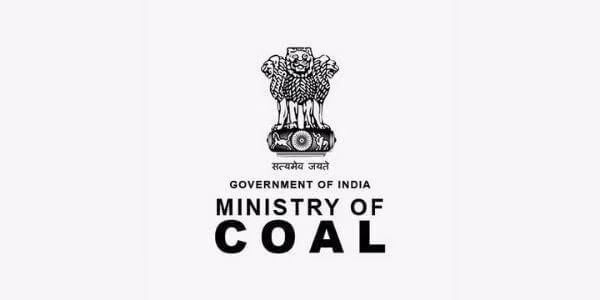 Why in News?
Why in News?
The Ministry of Coal has recently launched the RECLAIM Framework, aimed at enhancing community engagement and development during the closure and repurposing of coal mines in India.
Key Takeaways
- The RECLAIM Framework is designed to facilitate inclusive and sustainable coal mine closures.
- Developed by the Coal Controller Organisation in partnership with the Heartfulness Institute, it focuses on ensuring a fair transition for communities impacted by mine closures.
Additional Details
- Inclusivity Measures: The framework emphasizes gender equity and the inclusion of vulnerable groups. It aligns with Panchayati Raj Institutions to enhance accountability.
- Key Features:
- Guidelines: Mine closure guidelines were first introduced in 2009, with revisions in 2013 and 2020, aimed at improving environmental safety and social accountability.
- Community-Centric Planning: The framework encourages active participation from local stakeholders in the closure processes.
- Phased Implementation:The implementation consists of three phases:
- Pre-Closure: Conducting needs assessments and capacity building.
- Closure: Participatory execution of closure plans.
- Post-Closure: Focus on monitoring, livelihood restoration, and repurposing of assets.
- Support Tools: The framework is supported by practical tools and methodologies tailored for the Indian mining context.
- Broader Impact: It contributes to achieving the Sustainable Development Goals (SDGs) and is replicable in other resource-intensive sectors.
Despite the framework's intentions, several challenges remain in the coal mine closure process in India:
- Policy–Practice Gap: Only three coal mines have been formally closed since 2009.
- Low Compliance: Out of 299 non-operational coal mines, only eight have initiated formal closure processes.
- Environmental Risks: Abandoned mines contribute to methane emissions and ecological degradation.
- Community Displacement: Unsustainable mining practices have led to unemployment and reduced community involvement in closure planning.
- Land Return Issues: There is no clear policy regarding the return of post-mining land to original owners or communities.
- Financial Barriers: The high escrow fund requirements discourage mine operators from starting closure processes.
In conclusion, while the RECLAIM Framework seeks to address critical issues surrounding coal mine closure in India, the successful implementation of its guidelines will be vital for ensuring sustainable and equitable outcomes for affected communities.
Invisible Exports of India
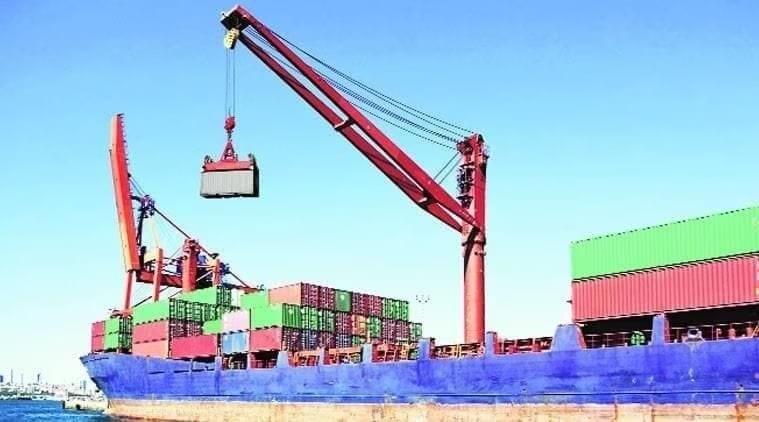 Why in News?
Why in News?
As of 2024–25, India's "invisibles" trade, which includes services exports and private money transfers, has not only surpassed its merchandise exports but has also become a crucial stabilizer of the current account deficit.
Key Takeaways
- Invisible exports now exceed merchandise exports.
- They play a vital role in stabilizing the current account deficit.
Additional Details
- What are Invisible Exports: Invisible exports refer to international trade in services and income flows that do not involve physical goods crossing borders. These transactions are primarily digital or financial.
- Types of Services Included: This includes a wide range of service-based exports such as IT services, financial consulting, legal and accounting services, research and development (R&D), and business process outsourcing (BPO) operations.
- Inclusion of Remittances: Private remittances, which are funds sent home by Indians working abroad, are counted as part of India's Balance of Payments (BoP).
- BoP Classification: These transactions are recorded under the Current Account of the BoP, specifically in the subcategories of services, primary income, and secondary income.
- Characteristics: Unlike physical exports, invisible exports do not require shipping, face fewer trade barriers, and rely heavily on skilled human capital.
- Leading Examples: Key invisible exports from India include software and IT-enabled services (from firms like Infosys, TCS, and Wipro), Global Capability Centers, financial and legal services, as well as education, tourism, and medical services.
- Role of Migrant Remittances: Remittances from Non-Resident Indians (NRIs) and migrant workers are crucial and constitute one of the largest components of India's invisible receipts.
- Their Contribution in Trade: Gross invisible receipts reached $576.5 billion, surpassing merchandise exports of $441.8 billion. Services alone accounted for $387.5 billion, a significant increase from $26.9 billion in 2003-04, while remittances contributed $135.4 billion.
- Buffer Against Trade Deficits: While the merchandise trade deficit stood at $287.2 billion, a net invisible surplus of $263.8 billion helped reduce the overall current account deficit to just $23.4 billion, providing essential stability.
- Resilience Across Global Crises: Invisible exports have shown resilience during major disruptions, such as the 2008 financial crisis and the COVID-19 pandemic, proving more robust than merchandise trade.
- Human Capital-Driven Growth: Services exports are driven by India’s skilled workforce rather than physical infrastructure, allowing India to evolve as the "office of the world".
- Less Policy Dependence: The growth of invisible exports has occurred largely without heavy government incentives or trade agreements, with India still lacking strong service-sector provisions in its major trade deals.
In conclusion, India's invisible exports have become a vital component of its economy, contributing significantly to the current account stability and showcasing the country's potential in the global service sector.
How India’s Foreign Trade Has Been Invisibilised
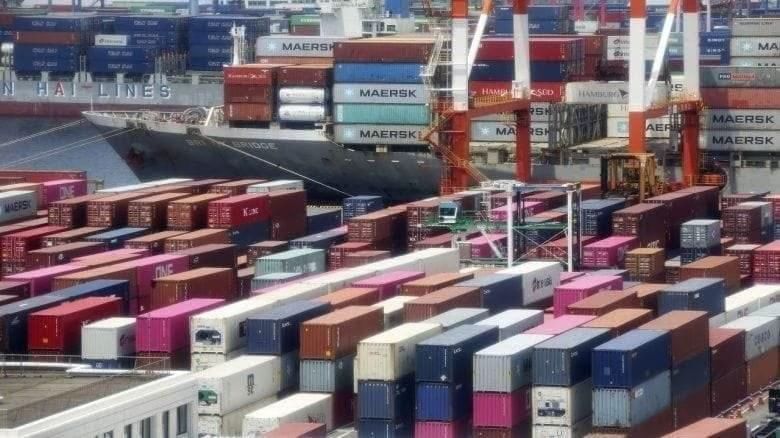 Why in News?
Why in News?
This article discusses the critical shift in India’s foreign trade narrative, emphasizing the growing importance of intangible trade components, known as "invisibles," which have now surpassed merchandise trade in influencing the country's external balance.
Key Takeaways
- Invisibles, including services and remittances, have become central to India’s foreign trade narrative.
- India’s merchandise exports have experienced fluctuations, while invisible receipts have shown consistent growth.
- Current trade policies predominantly focus on physical goods, neglecting the significance of services and intangibles.
Additional Details
- India’s Evolving Trade Landscape: The trade dynamics in India are shifting from tangible goods to intangible services and remittances, which are now crucial for the country's economic health.
- Merchandise Exports: India’s merchandise exports grew from $66.3 billion in 2003-04 to $318.6 billion in 2013-14, but saw a decline to $441.8 billion by 2024-25 after a post-Covid peak.
- Invisible Receipts: These have increased from $53.5 billion in 2003-04 to $576.5 billion in 2024-25, showcasing resilience and long-term stability.
- Trade Negotiations: Current negotiations with the U.S. remain fixated on tangible goods, overlooking the potential of India’s services sector.
- Economic Resilience: India’s invisibles have remained robust against global economic shocks, contrasting with the volatility of merchandise trade.
- India vs. China: China maintains a significant goods trade surplus, while India’s strength lies in its services, which include software and professional services.
In summary, India's trade narrative needs to be redefined to reflect the reality of an economy increasingly driven by intangible assets. Recognizing the importance of invisibles is essential for shaping future trade policies and enhancing India's global economic engagement.
India Ranks 4th Most Equal Society According to World Bank
Why in News?
As of 2025, India has been recognized as the fourth most equal country in terms of income distribution, as reported in the World Bank’s Spring 2025 Poverty and Equity Brief.
Key Takeaways
- India's Gini Score: 25.5 in 2022-23, indicating strong income equality.
- 171 million people moved out of extreme poverty between 2011 and 2023.
- India outperforms all G7 and G20 nations in terms of income equality.
Additional Details
- About the World Bank’s Spring 2025 Poverty and Equity Brief: This biannual publication provides an analysis of poverty, inequality, and shared prosperity using comprehensive data from household surveys and national datasets.
- Gini Index: A measure of income distribution equality, where a score of 0 indicates perfect equality and 100 indicates perfect inequality. India's score of 25.5 reflects significant equality.
- Poverty Headcount Ratio: Indicates the percentage of the population living below poverty lines. In 2022-23, 2.3% of the population lived below $2.15/day, and 5.3% below $3/day.
- Shared Prosperity Premium: Assesses if the bottom 40% of the population is experiencing growth at a rate higher than the average.
The Spring 2025 report highlights India's remarkable progress in reducing poverty and improving income distribution, making it a pivotal example for developing nations in post-pandemic recovery and equity in welfare policies.
India Ranks 4th in Global Income Equality: World Bank Report
 Why in the News?
Why in the News?
According to a World Bank report, inequality in India has significantly decreased between 2011-12 and 2022-23, positioning India as the fourth-most equal country globally.
Key Takeaways
- India's Gini Index score is 25.5, indicating a substantial level of income equality.
- Over 171 million Indians have escaped extreme poverty in the past decade.
- Government welfare policies have played a crucial role in this achievement.
Additional Details
- Gini Index: This statistical measure is used to evaluate income inequality, where 0 indicates perfect equality and 100 signifies maximum inequality. India's Gini Index of 25.5 positions it in the "moderately low inequality" category.
- In comparison, other countries' Gini scores are as follows:
- China: 35.7
- United States: 41.8
- Government Schemes:Key initiatives contributing to this progress include:
- PM Jan Dhan Yojana: Created 55 crore bank accounts, enhancing financial access for rural and underbanked populations.
- Aadhaar-linked Direct Benefit Transfers (DBT): Enabled the efficient delivery of government benefits, saving over ₹3.48 lakh crore by March 2023.
- Ayushman Bharat: Provides ₹5 lakh in health insurance, with over 41 crore cards issued.
- PMGKAY: Distributed free food grains to over 80 crore beneficiaries, aiding food security and nutrition.
- Equity in Growth: India's approach balances economic reform with social protection, aiming for inclusive growth.
This progress is seen as a model for developing economies, demonstrating that targeted welfare policies can achieve significant reductions in inequality while promoting economic growth.
Promise and Pitfalls of the Employment-Linked Incentive Scheme
 Why in News?
Why in News?
The Union Cabinet has recently approved the Employment-Linked Incentive (ELI) scheme, which comes with a significant budget of ₹99,446 crore, as part of the 2024–25 Union Budget. The primary objective of this scheme is to enhance job creation, particularly in the manufacturing sector. It is a part of the Prime Minister's broader employment package, which includes initiatives for internships with major companies and youth skill development programs.
Key Takeaways
- The ELI scheme aims to create over 3.5 crore jobs within two years.
- It is set to be implemented from August 1, 2025, to July 31, 2027.
- The Employees Provident Fund Organisation (EPFO) will be responsible for implementing this scheme.
Additional Details
- Expected Beneficiaries: Approximately 1.92 crore newly employed individuals will benefit from the scheme.
- Employee Benefits:
- Eligibility for salaries up to ₹1 lakh/month.
- Incentive of one-month EPF wage (up to ₹15,000).
- Disbursal in two installments: the first after 6 months of service and the second after 12 months.
- Mode of payment will be direct bank transfer.
- A portion of the benefits will be allocated to a fixed deposit account, which is withdrawable later.
- Employer Incentives:
- Support of up to ₹3,000/month for each new employee retained for a minimum of 6 months, valid for two years.
- For manufacturing firms, incentives will extend into the third and fourth years as well.
- Employers have termed the ELI scheme as a commendable initiative that promotes first-time employment and sustained job creation in the manufacturing sector.
- Industry Insights:
- Experts suggest including micro and small manufacturing units, particularly those with fewer than 20 employees, to widen the benefits.
- There is a proposal to shift the scheme to the Ministry of MSME and adopt a structured reimbursement model based on payroll growth.
- Direct monthly subsidies tied to continued employment for both employers and employees could facilitate broader adoption.
- Trade Union Responses:
- The Bharatiya Mazdoor Sangh (BMS) has shown support for the scheme but calls for expanded social security and improved job quality.
- Ten other central trade unions have expressed concerns, highlighting risks associated with potential misuse of funds and unfavorable past experiences.
In conclusion, while the Employment-Linked Incentive Scheme presents significant opportunities for job creation and economic growth, it also faces challenges and skepticism from various stakeholders. The effectiveness of the scheme will depend on its implementation and the measures taken to ensure that it meets its objectives without compromising worker rights and benefits.
Understanding the Gini Index
Why in News?
India has been recognized as the fourth most equal society globally, boasting a Gini Index of 25.5. This achievement places India ahead of all G7 and G20 nations, according to a recent World Bank report.
Key Takeaways
- The Gini Index measures the level of income inequality within a country.
- It ranges from 0 (perfect equality) to 1 (perfect inequality).
- India’s Gini Index has improved from 38 in 2011 to 25.5 in 2022.
Additional Details
- Gini Index: Also known as the Gini coefficient or Gini ratio, this metric evaluates income distribution across a population, developed by Italian statistician Corrado Gini in 1912.
- The index is based on the Lorenz curve, which illustrates the distribution of income or wealth. The cumulative income of the population is plotted against the population percentiles.
- India's performance in the Gini Index surpasses that of regional peers such as China, which has a Gini score of 35.7, and represents a significant step towards reducing income inequality.
- This improvement signals effective measures taken to bridge income gaps over the last decade.
In conclusion, India's Gini Index reflects a notable achievement in promoting income equality, emphasizing the importance of continuous efforts towards equitable economic development.
Relaxed Emission Norms for Small Cars Urged Amid Global Trends
Why in News?
A recent study by researchers at Nomura has recommended that India reform its Corporate Average Fuel Efficiency (CAFE) norms. The aim is to align with global best practices by introducing protective measures for small cars.
Key Takeaways
- India's CAFE norms were introduced in 2017 to regulate fuel consumption and CO₂ emissions from passenger vehicles.
- Current regulations disproportionately penalize smaller cars while allowing heavier vehicles to meet compliance more easily.
- Global practices show that other countries adopt more flexible emission standards for small cars.
Additional Details
- Corporate Average Fuel Efficiency (CAFE) norms: These are government-mandated standards requiring auto manufacturers to achieve a fleet-wide average fuel economy target. India’s CAFE norms were effective in two phases, with the second phase starting in 2022-23.
- Objective of CAFE norms: Designed to lower oil imports, reduce air pollution, and promote cleaner vehicles such as electric vehicles (EVs) and hybrids.
- Under current regulations, heavier vehicles face relaxed CO₂ emissions targets, while lighter cars face stricter limits, even if their emissions are already low.
- The Nomura study highlights the flawed linear weight-based approach of India's CAFE norms, which penalizes efficient smaller vehicles.
- Countries like the US, China, and Japan utilize flexible frameworks that support small, fuel-efficient vehicles, contrasting with India's stringent approach.
To summarize, the study emphasizes the need for India to adopt a more balanced and flexible approach to emission norms, ensuring that small cars are not unfairly penalized, thus encouraging innovation and further development in the small car market.
Impact of the US Remittance Tax on India: Limited Losses but Higher Costs
Why in the News?
The United States has implemented a 1% tax on certain outbound remittances under the One Big Beautiful Bill Act, raising concerns about its potential effects on India's remittance inflows.
Key Takeaways
- The new remittance tax is set to take effect on January 1, 2026.
- India, the world's largest recipient of remittances, is expected to experience marginal impacts primarily through increased costs.
Additional Details
- Key Features of the Tax:Initially proposed as a 5% tax, it was reduced to 1% after bipartisan negotiations. Key exemptions include:
- Applies only to physical transfer methods like cash, money orders, and cashier's checks.
- Bank account transfers or payments via US-issued debit/credit cards are exempt.
- Transfers under $15 are not taxed.
- US citizens sending remittances are exempt from this tax.
- Implications for India: According to the Centre for Global Development, India may lose just under $500 million in formal remittance inflows, which is minor compared to the $124.3 billion received in net remittances during 2024-25.
- Remittances from the US account for approximately 27.7% of India's total remittance receipts.
- Distributional Effects: Economists note the impact will likely be frontloaded into the first three quarters of FY2025-26, as senders may advance transfers to avoid the tax.
In summary, while the new remittance tax introduces higher transaction costs for sending money to India, the overall long-term impact on remittance volumes is expected to remain limited, thanks to significant exemptions and the relatively low tax rate.
Urban Renaissance: Unlocking the Potential of India's Top 15 Cities for a $30 Trillion Economy by 2047
Why in News?
As India aims to become a $30 trillion economy by 2047, its urban centers are expected to drive innovation, create jobs, and foster economic growth. However, the country’s top 15 cities face numerous systemic challenges such as pollution, inadequate planning, weak governance, and insufficient infrastructure.
Key Takeaways
- India's top cities contribute 30% of the national GDP.
- These urban areas can potentially add 1.5% to the annual GDP growth.
- Major challenges include air pollution, traffic congestion, and inadequate digital infrastructure.
- Reforms in governance and urban planning are essential for sustainable growth.
Additional Details
- Environmental and Health Challenges: India has 42 of the world’s 50 most polluted cities, primarily due to vehicular emissions, construction dust, and biomass burning. Proposed solutions include electrifying public transport and strict enforcement of dust norms.
- Solid Waste Management: Indian cities generate approximately 1.5 lakh tonnes of solid waste per day, but only 25% is processed. Transitioning to a circular waste economy could unlock $73.5 trillion by 2030, with Indore serving as a best practice model.
- Urban Water Crisis: Nearly half of India's rivers are polluted, with predictions indicating that 40% of the population may face water scarcity by 2030. Innovations in Indore, such as rainwater harvesting, have positioned it as a water-positive city.
- Housing Deficit: There is an estimated shortfall of 10 million affordable homes currently, projected to rise to 31 million by 2030. Increasing floor space index (FSI) could promote vertical growth and alleviate housing issues.
- Urban Mobility: Commuters in urban areas lose 1.5 to 2 hours daily due to congestion. Smart mobility solutions, including investment in public transport and real-time traffic management, are necessary to address these issues.
- Digital Infrastructure: India’s average internet speed is around 100 Mbps, significantly lower than global standards. Upgrading digital infrastructure is crucial for attracting multinational corporations and fostering innovation.
- Governance Reforms: With a planner-to-population ratio of 1:100,000, India lacks adequate urban planning resources. Strengthening decentralized governance and enhancing property tax collection are critical steps toward effective urban management.
In conclusion, empowering India's top 15 cities with targeted investments in infrastructure, governance, environmental sustainability, and digital accessibility is vital for achieving the vision of a $30 trillion economy. These urban centers have the potential to lead India's economic, cultural, and technological transformation over the coming decade.
Oil Exploration in the Andaman Basin
Why in News?
The Union Minister for Petroleum has announced that India is close to a potential oil discovery in the Andaman Sea, comparable to significant finds in Guyana.
Key Takeaways
- India's economic growth has been significantly influenced by offshore oil production, with a reported 47% average real GDP growth since 2022.
- The Andaman Basin is one of India’s largest unexplored offshore sedimentary areas, covering approximately 2.25 lakh sq. km.
Additional Details
- Location and Scale: The Andaman Basin is situated in the southeastern Bay of Bengal and is recognized for its vast unexplored potential.
- Geological Importance: This basin shares tectonic and structural similarities with hydrocarbon-rich regions such as North Sumatra (Indonesia) and the Irrawaddy-Margui basin (Myanmar).
- Historical Restrictions: Previously designated as a 'No-Go' zone, the region was restricted from oil exploration due to environmental and strategic concerns.
- Scientific Breakthrough: In 2020, Oil India Ltd initiated the Deep Andaman Offshore Survey, revealing mud volcanoes and Baratang formations, indicating hydrocarbon activity.
- Data Entry into National Records: Findings from the survey were incorporated into the National Data Repository (NDR) in 2023, providing crucial geological data to investors.
- Rising Strategic Interest: The Andaman Basin is now viewed as essential for India's energy security, particularly due to its deepwater potential, which could reduce the country's oil imports.
- Recent Collaborations: Oil and Natural Gas Corporation (ONGC) has partnered with TotalEnergies from France to explore deepwater blocks in this basin.
The introduction of the Hydrocarbon Exploration and Licensing Policy (HELP) in 2016 facilitated oil exploration in the Andaman Basin by replacing the older NELP system with a friendlier framework for the industry.
Policy Shift that Enabled Exploration
- Licensing Reform: HELP allows for a single license to cover all hydrocarbons—including oil, gas, shale, and coal bed methane—eliminating the need for multiple permits.
- Revenue Sharing System: The government now receives a fixed share of revenue instead of auditing costs, which simplifies compliance and reduces disputes.
- Open Acreage Licensing Policy (OALP): This policy enables companies to bid for exploration blocks of their choice throughout the year, promoting customized investments.
- Use of Geological Data: Companies can leverage extensive geological and seismic information for informed decision-making.
- Market Freedom: Under HELP, companies are free to price and market their oil and gas, enhancing competitiveness and attracting private investment.
- Royalty Incentives: The graded royalty system lowers rates for deepwater and ultra-deepwater blocks, which is crucial for high-risk exploration like that in the Andaman Basin.
In summary, the ongoing exploration efforts and policy reforms are paving the way for significant advancements in India's oil production capabilities, particularly in the Andaman Basin.
Cease the cess: Low GST collections speak to the need for structural reforms
Why in News?
On July 1, 2025, India marked eight years since the launch of the Goods and Services Tax (GST), but this milestone has raised concerns for the economy. In June, GST collections dropped to ₹1.85 lakh crore, the lowest in four months, growing by just 6.2% year-on-year, marking the slowest growth in four years.
Key Takeaways
- Low GST collections indicate sluggish economic activity and reduced demand.
- There are inefficiencies in the tax system that hinder compliance and enforcement.
- Exclusion of fuel from GST creates revenue autonomy issues for States.
- Debate exists over fewer GST slabs to simplify the tax structure.
Additional Details
- Sluggish Economic Activity: As GST is a consumption-based tax, low collections suggest a slowdown in economic growth due to reduced demand and consumption.
- Tax System Inefficiencies: The marginal growth in net collections (only 3.3% after refunds) indicates compliance loopholes, delayed refunds, and administrative inefficiencies.
- Weak Revenue Buoyancy: Revenue from domestic transactions rose by only 4.6%, hardly exceeding inflation, pointing to limited buoyancy in the tax system.
- Exclusion of Fuel from GST: Fuel taxes are a significant revenue source for States, and including them in GST would reduce their financial autonomy and undermine the principle of a unified tax system.
- Fewer GST Slabs: This proposal aims to merge tax rates to create a simpler GST system, potentially improving compliance and efficiency by reducing confusion and errors associated with multiple slabs.
In conclusion, addressing the challenges posed by low GST collections requires structural reforms in the tax system, including a reconsideration of fuel taxation and simplification of GST slabs. Such measures could enhance compliance, reduce litigation, and ultimately support economic recovery.
Government’s Strategic Push for Arhar and Urad Cultivation
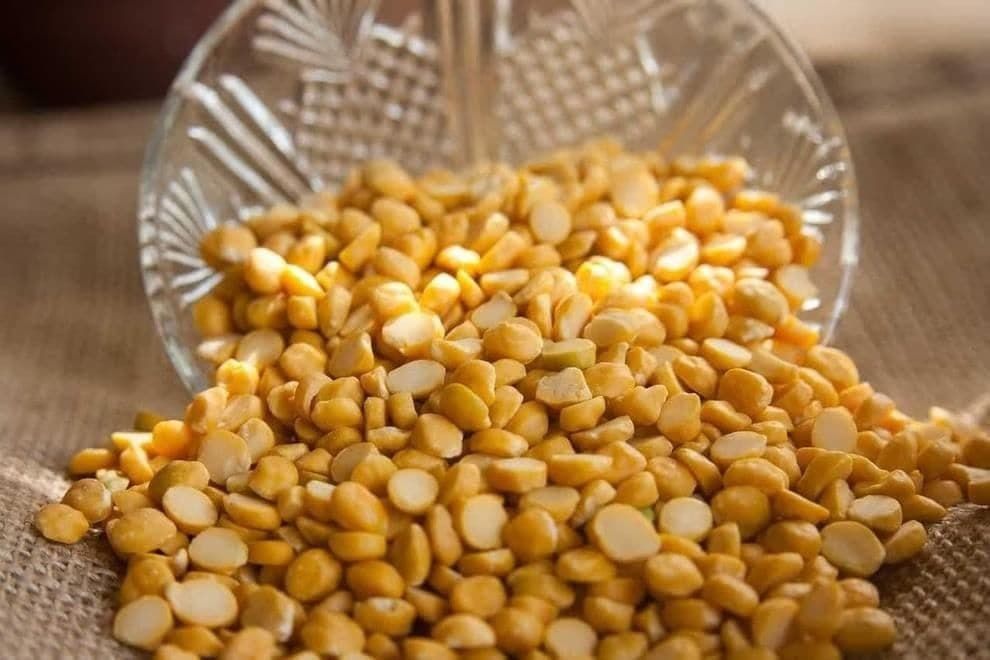 Why in News?
Why in News?
In light of increasing pulse imports and heightened domestic demand, the Department of Consumer Affairs, under the Ministry of Consumer Affairs, Food and Public Distribution, has launched a targeted program. This initiative aims to enhance the cultivation of arhar (tur) and urad across several states in India during the Kharif season of 2025. This effort is part of a larger strategy focusing on food security and reducing imports.
Key Takeaways
- The program promotes cultivation through seed distribution campaigns.
- A total of ₹1 crore is allocated for seed distribution, with a 100% procurement guarantee at Minimum Support Price (MSP).
- Key states involved include Jharkhand, Uttar Pradesh, Bihar, Karnataka, Manipur, and Tripura.
Additional Details
- Launch of Pulse Cultivation Campaign: The initiative, implemented by the National Cooperative Consumer’s Federation of India Ltd. (NCCF), extends from a pilot project in two districts of Jharkhand to twelve districts across seven states.
- Criteria for District Selection: The selected districts are mainly rainfed areas and include Aspirational Blocks as identified by NITI Aayog.
- Pulses and Their Importance: Pulses are a significant source of protein, comprising 20-25% of their weight, and are essential for a carbohydrate-rich diet in India.
- Domestic Production Trends: The production of pulses in India has increased from 163.23 lakh tonnes in 2015-16 to 244.93 lakh tonnes in 2023-24.
- Import-Export Data: In 2023-24, imports reached 47.38 lakh tonnes, highlighting the country's dependency on pulse imports.
This strategic push for arhar and urad cultivation represents a significant step towards achieving greater self-sufficiency in pulse production and addressing the challenges posed by rising demand and import dependency.
NITI Aayog Recommends Incentives and Port Upgrades to Boost Chemical Exports
Why in News?
NITI Aayog has put forward initiatives aimed at significantly increasing India’s chemical exports from $44 billion to nearly double this figure by the year 2030. These measures are designed to address the challenges posed by limited domestic demand which has been identified as a primary constraint to growth.
Key Takeaways
- Development of production clusters to enhance scale.
- Upgrading port infrastructure for better logistics and storage capabilities.
- Introduction of a sales-linked incentive scheme to promote local production and export of essential chemicals.
Additional Details
- Current Status: India ranks as the 6th largest chemical producer globally and the 3rd in Asia, contributing 7% to the national GDP. It is positioned 14th in global chemical exports (excluding pharmaceuticals) with a trade deficit of $31 billion in 2023.
- Market Valuation: The chemical market in India was valued at $220 billion in 2023, with aspirations to reach $1 trillion by 2040. Experts stress that focusing on exports is vital for achieving this target.
- Regional Manufacturing Hubs: The chemical industry is predominantly located in Maharashtra and Gujarat, with significant contributions from West Bengal and Tamil Nadu. The sector includes over 80,000 commercial products across various categories.
- Global Leadership: India is the 4th largest producer of agrochemicals and the 3rd largest consumer of polymers, contributing 16-18% to global dye production.
- PCPIR Policy: The Petroleum, Chemicals and Petrochemicals Investment Region (PCPIR) Policy aims for massive investments totaling $284 billion by 2035.
NITI Aayog’s recommendations include vital measures to enhance India's position in the global chemical market through strategic upgrades and incentives, ultimately leading to a more robust export framework.
Gig Workers in India: Data Gaps and the Need for Inclusive Labour Statistics
Why in News?
India's primary labour survey, the Periodic Labour Force Survey (PLFS), has faced criticism for inadequately capturing the expanding gig and platform workforce, despite increasing recognition and welfare initiatives at the policy level.
Key Takeaways
- The gig workforce in India is projected to grow to 23.5 million by 2029-30, according to a 2022 NITI Aayog report.
- The 2025 Union Budget has extended key social protection measures to gig workers.
- The PLFS fails to distinctly identify gig workers, leading to their classification under broad categories.
Additional Details
- Recognising the Growing Gig Workforce: India's workforce is undergoing a transformation with a rise in gig and platform-based employment across various sectors including food delivery, ride-hailing, digital freelancing, and home services.
- Legal Definitions and Policy Intentions: The Code on Social Security, 2020 defines gig workers as individuals engaged in income-generating work outside traditional employer-employee relationships. However, it lacks specificity in distinguishing gig workers from self-employed or casual labourers.
- Limitations of the PLFS: The PLFS does not specifically identify gig workers, leading to their classification as 'self-employed' or 'casual labour', which obscures important characteristics of gig work such as income volatility and lack of formal contracts.
- Current government initiatives, including e-Shram registration and digital ID issuance, aim to integrate gig workers into formal welfare systems, but without updated statistics, the effectiveness of these measures remains unmeasured.
- Towards Inclusive Labour Statistics: There is a critical need to evolve India's labour statistics framework by updating PLFS classifications and introducing special survey modules to accurately capture gig and platform work.
In summary, addressing the gaps in labour statistics is essential for ensuring that gig workers receive equitable access to welfare and social protections, allowing for effective policymaking that reflects the realities of a changing workforce.
Employment Linked Incentive Scheme: India’s Bold Push for Jobs in Manufacturing
Why in News?
The Union Cabinet has approved the Employment-Linked Incentive (ELI) scheme with a substantial allocation of Rs. 99,446 crore aimed at boosting employment generation across India.
Key Takeaways
- The ELI scheme is part of a broader initiative to create over 3.5 crore jobs within two years.
- It particularly focuses on integrating first-time employees and enhancing job opportunities in the manufacturing sector.
- The scheme was unveiled in the Union Budget 2024-25 as part of a Rs 2 lakh crore employment and skilling package.
Additional Details
- Objectives and Scope: The ELI scheme aims to address significant challenges in India's labour market, including low formalisation and slow job growth in manufacturing. It seeks to support both first-time employees and incentivise employers.
- Core Components:
- Part A: Incentives for First-Time Employees: Designed for employees registering with the Employees’ Provident Fund Organisation (EPFO). Eligible employees with salaries up to Rs 1 lakh will receive one month’s EPF wage (up to Rs. 15,000) in two instalments, benefiting around 1.92 crore workers.
- Part B: Incentives for Employers: Targets employers creating new jobs, providing monthly incentives based on salary brackets. Employers must hire a minimum number of new employees to qualify, with the scheme projected to create approximately 2.60 crore new jobs.
- Implementation and Payment Mechanism: The scheme will utilize a Direct Benefit Transfer (DBT) model for transparent disbursements. Payments to employees will go through the Aadhaar Bridge Payment System (ABPS), while employer incentives will be credited directly into PAN-linked accounts.
- Broader Implications: Beyond wage support, the scheme emphasizes labour formalisation and skill development, aiming to include informal workers in the social security net.
The ELI scheme is a significant step towards creating a structured employment landscape in India, particularly in the post-pandemic era. While it has garnered support from industry bodies, some trade unions have raised concerns over accountability, indicating a need for careful monitoring and evaluation of the scheme's implementation.
Latest Agriculture Output Report - Fruits Surge, Cereals Slide
Why in News?
New data from the Ministry of Statistics and Programme Implementation (MoSPI) highlights changing food preferences and consumption patterns, indicating that farmers are increasingly shifting towards high-value crops. Over the last decade, the Gross Value of Output (GVO) has seen significant growth, particularly in fruits like strawberries and pomegranates and vegetables such as parwal (pointed gourd) and mushrooms.
Key Takeaways
- The Gross Value Added (GVA) of agriculture rose by approximately 225% from ₹1,502 thousand crore in 2011-12 to ₹4,878 thousand crore in 2023-24.
- High-value crops have shown dramatic increases in output, with strawberries experiencing a rise of over 40 times in GVO.
- Meat's share in agriculture GVO increased, while cereals saw a decline, highlighting a shift in dietary preferences.
Additional Details
- Gross Value of Output (GVO): This term refers to the total value of agricultural products produced before accounting for the costs of inputs. The GVO is a crucial measure of agricultural productivity.
- The GVO of certain fruits and vegetables has surged dramatically between 2011-12 and 2023-24, including:
- Strawberries: GVO rose over 40 times to ₹55.4 crore (constant prices) and nearly 80 times to ₹103.27 crore (current prices).
- Parwal (pointed gourd): Increased 17-fold to ₹789 crore.
- Pumpkin: Rose almost 10 times to ₹2,449 crore.
- Pomegranates: Grew over 4 times to ₹9,231 crore.
- Mushrooms: Jumped 3.5 times to ₹1,704 crore.
- Despite the growth in production, fruit consumption remains relatively low as a percentage of Monthly Per Capita Consumption Expenditure (MPCE), with rural MPCE rising from 2.25% to 2.66% and urban MPCE slightly dipping from 2.64% to 2.61%.
- Urban and rural MPCE on cereals has also declined, reflecting changing dietary habits, with urban MPCE falling from 6.61% to 3.74% and rural MPCE from 10.69% to 4.97%.
In summary, the latest report from MoSPI illustrates a structural shift in India's agricultural landscape, moving from traditional staples towards high-value fruits, vegetables, and animal products. This shift is driven by various factors, including technological advancements and evolving consumer preferences, aligning with Engel's Law where the share of expenditure on food decreases as income rises.
GST Reform and Unfinished Business in Tobacco Control
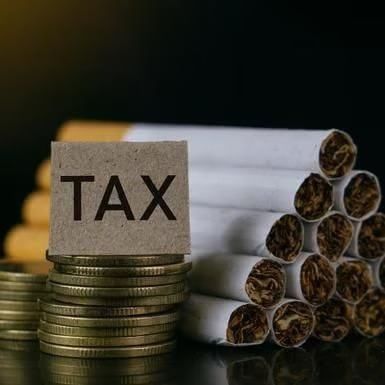 Why in News?
Why in News?
As India observes the eighth anniversary of the Goods and Services Tax (GST) on July 1, 2025, it is crucial to assess the impact of this significant tax reform. Initiated in 2017 under the slogan 'One Nation, One Tax', GST aimed to simplify the complex landscape of indirect taxes, thereby creating a unified national market and standardizing tax frameworks across various states. While the economic and administrative benefits of GST are notable, its inadequacies, particularly in the area of tobacco taxation, highlight urgent areas needing reform.
Key Takeaways
- GST has replaced multiple indirect taxes, simplifying tax collection and reducing compliance burdens.
- Despite its successes, GST has not adequately addressed tobacco taxation, leading to increased affordability of tobacco products.
- The average GST revenue from tobacco is significantly lower than the economic costs associated with tobacco use.
Additional Details
- Goods and Services Tax (GST): A transformative tax reform that has streamlined multiple taxes, improving business efficiency and transparency through digitization.
- Tobacco Taxation and Public Health: Tobacco use causes over 3,500 deaths daily in India and represents a substantial economic burden, yet GST has not resulted in increased tobacco taxes.
- Structural Flaws: GST’s reliance on ad valorem taxation is inadequate for controlling harmful products like tobacco; fixed specific excise taxes are more effective in global contexts.
- Need for Reform: Increasing GST rates on tobacco to the maximum allowed and raising specific excise duties is crucial for aligning public health goals with fiscal policy.
- Illicit Trade Concerns: The tobacco industry argues that higher taxes lead to illicit trade; however, studies indicate that illicit tobacco products account for only a small fraction of the market.
In conclusion, as the GST Council considers necessary reforms, it is essential to prioritize public health. The eighth anniversary of GST should not only be a moment for reflection but also a call to action to ensure that GST serves as a tool for both economic efficiency and social responsibility.
India Energy Stack Initiative
Why in News?
The Ministry of Power has recently announced the establishment of a task force to design and implement the India Energy Stack (IES), marking a significant step towards modernizing India's energy sector.
Key Takeaways
- The India Energy Stack aims to create a unified, secure, and interoperable digital infrastructure for the energy sector.
- This initiative will serve as a Digital Public Infrastructure (DPI), providing a standardized and open platform for managing the electricity value chain.
- It will facilitate unique identification for consumers, assets, and transactions, along with real-time data sharing.
Additional Details
- Unique Features of IES: The India Energy Stack will provide tools for consumer empowerment, market access, and innovation through open APIs that allow seamless integration of systems.
- The Ministry will conduct a 12-month Proof of Concept (PoC) to showcase the IES in action through real-world use cases, collaborating with selected utilities.
- The initiative will include the pilot of the Utility Intelligence Platform (UIP), an analytics-driven application designed to support utilities, policymakers, and consumers with real-time insights for improved energy management.
- A dedicated Task Force has been formed by the Ministry, consisting of experts from technology, the power sector, and regulatory domains to oversee the development and nationwide implementation of IES.
This initiative is poised to revolutionize how energy is managed in India, driving innovation and efficiency across the sector.
Financial Stability Report (FSR) - June 2025
Why in News?
The Reserve Bank of India (RBI) has recently published the Financial Stability Report for June 2025, providing insights into the resilience of the Indian financial system and potential risks to financial stability.
Key Takeaways
- The Indian economy continues to be a significant contributor to global growth, supported by sound macroeconomic fundamentals and prudent policies.
- Risks to growth include geopolitical tensions, uncertainty in trade, and weather-related challenges.
- The non-performing loans (NPL) ratio is at a historic low, indicating the strength of the financial system.
- Capital adequacy in the banking sector remains well above regulatory requirements, providing a buffer against economic shocks.
Additional Details
- Non-Performing Assets (NPA): As of March 2025, the gross non-performing asset (GNPA) ratio stands at 2.3%, with projections suggesting it could rise to 2.5% under baseline conditions.
- For 46 banks, which make up 98% of scheduled commercial banks' assets, GNPAs might increase to 2.6% by March 2027.
- Capital Adequacy: The capital adequacy ratios of banks are expected to remain comfortably above minimum requirements, even in severe stress scenarios, demonstrating the sector’s capability to withstand economic challenges.
- The outlook for food inflation is positive, with prices softening and crop production reaching record levels, contributing to domestic demand.
- The financial system remains stable, characterized by healthy balance sheets across both banks and non-banking financial companies (NBFCs).
In conclusion, despite facing several challenges, the Indian financial system exhibits resilience and preparedness, with robust indicators supporting ongoing growth and stability.
|
98 videos|960 docs|33 tests
|
FAQs on Economic Development (Part 2): July 2025 Current Affairs - Current Affairs & General Knowledge - CLAT
| 1. What are catastrophe bonds and how do they contribute to disaster resilience in India? |  |
| 2. What is the RECLAIM Framework for Inclusive Mine Closure? |  |
| 3. How has India’s foreign trade been invisibilised, and what are the implications? |  |
| 4. What does the World Bank report regarding income equality in India indicate? |  |
| 5. What are the promise and pitfalls of the Employment-Linked Incentive Scheme in India? |  |
















